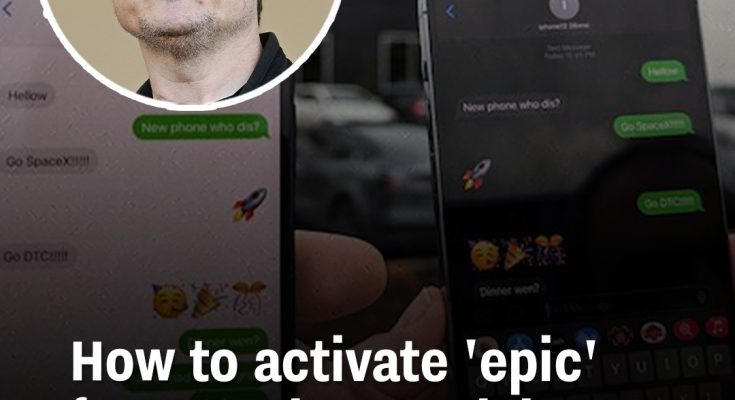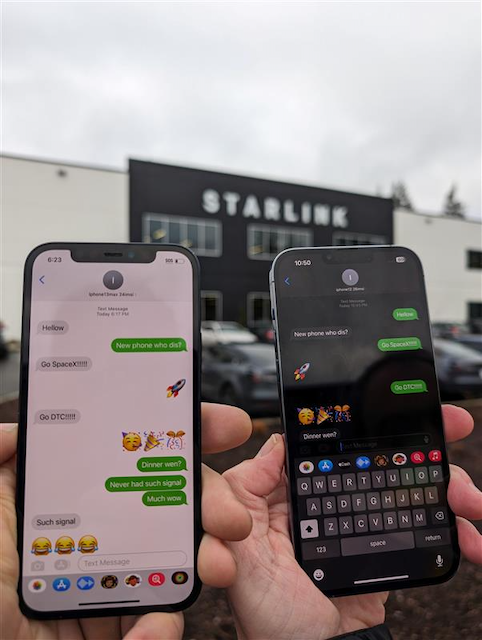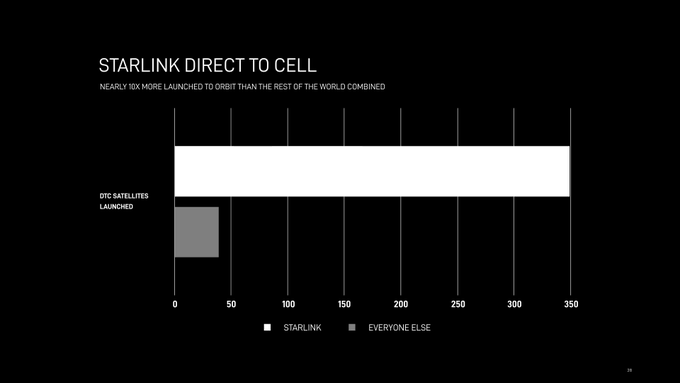This is how you can activate the ‘epic’ feature activated by Elon Musk’s firm just across iPhone and Android devices.
The groundbreaking new feature from Starlink has the potential to change cellular connectivity forever.
The Direct to Cell service from the satellite internet provider means that users will no longer need specialized equipment to make satellite calls around the world.
Instead, users will be able to use the service with just their iPhone or Android smartphone.
This is pretty exciting news for Starlink, which is owned by Musk’s SpaceX, but how does the new feature work?

Elon Musk’s Starlink is launching an innovative new feature (Jamie Kelter Davis/Bloomberg via Getty Images)
According to the company, Starlink satellites with Direct to Cell capability have an advanced eNodeB modem onboard that acts like a cellphone tower in space, allowing network integration similar to a standard roaming partner.
Starlink has described the service as being ‘engineered to eliminate mobile dead zones around the world’ and it is said to be a game changer for emergency events where people need assistance in remote locations.
On the Starlink website, it said: “Starlink satellites with Direct to Cell capabilities enable ubiquitous access to texting, calling, and browsing wherever you may be on land, lakes, or coastal waters. Direct to Cell will also connect IoT devices with common LTE standards.”
How to activate Starlink’s Direct to Cell service
In order to activate the new service, you’ll first need to make sure you have a compatible device and SIM card.
The Direct to Call service will allow you to make voice calls directly from your device without the need for any modifications, as long as your phone has LTE.
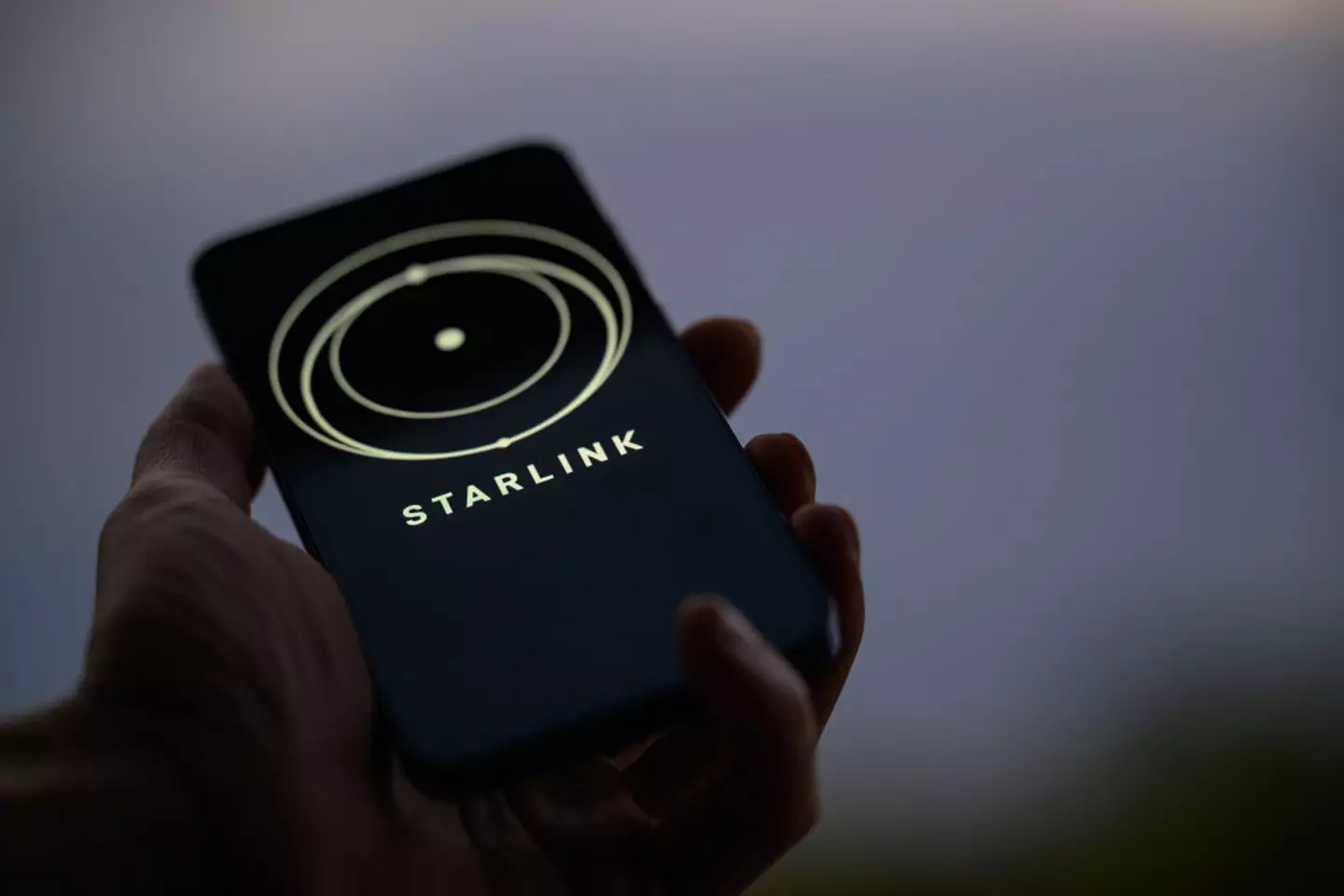
Starlink is introducing a new Direct to Cell service (Jonathan Raa/NurPhoto via Getty Images)
Through your network settings, you will be able to activate Starlink, which means your phone will automatically switch to the satellite network whenever your regular cellular signal is not available.
Many fans of Starlink have shared their own reactions to the new service on social media, with one person taking to X, formerly Twitter, to describe the technology as ‘epic’.
Another user wrote: “I can’t wait to get my own Starlink connection!!”
A third person said: “Unbelievable! Way to powerfully demonstrate leveraging your extraplanetary prowess.”
And a fourth added: “Imagine launching over 100 new cell phone towers in space in just half a year. That’s what happened! This could mean people in the countryside get better phone service much sooner than we thought.”
The Direct to Cell service means people should be able to make a phone call from virtually anywhere in the world, even if you have no signal.
Featured Image Credit: Jonathan Raa/NurPhoto via Getty Images

Elon Musk has enabled a groundbreaking feature on all iPhones and Androids that could change how we use our devices forever.
The billionaire’s new innovation is making waves in the tech industry for how it’ll change cellular connectivity.
His satellite internet provider, Starlink, will no longer need specialized equipment to make satellite calls around the world.
Instead, users can use the service with just their iPhone or Android smartphone.
This is called the Direct to Cell service and it means that people should be able to make a phone call from virtually anywhere in the world, even if you have no signal.
So, if you find yourself stuck in a very remote location with no service, you might soon be able to connect to Starlink to call someone.
Musk’s internet firm will allow you to make voice calls directly from your device without the need for any modifications, as long as your phone has LTE.
This is said to have the potential to become a game changer in emergency events where people find themselves lost in places like the woods on a mountain hike.
According to Starlink, the service is ‘engineered to eliminate mobile dead zones around the world’.
On the website, it said: “Starlink satellites with Direct to Cell capabilities enable ubiquitous access to texting, calling, and browsing wherever you may be on land, lakes, or coastal waters. Direct to Cell will also connect IoT devices with common LTE standards.”

Elon Musk’s Starlink has an innovative new feature for smartphones (Shawn Thew/EPA/Bloomberg via Getty Images)
So, how does it work? According to the firm which is owned by SpaceX, Starlink satellites with Direct to Cell capability have an advanced eNodeB modem onboard that acts like a cellphone tower in space, allowing network integration similar to a standard roaming partner.
Direct to Cell is currently being rolled out as part of a commercial package in its satellite phone service, although prices have not yet been shared.
People have taken to social media to share their own reactions to the new technology, with many sharing a similar sentiment.
On X, formerly Twitter, one user described the innovation as ‘epic’, while another wrote: “I can’t wait to get my own Starlink connection!!”
A third person said: “Imagine launching over 100 new cell phone towers in space in just half a year. That’s what happened! This could mean people in the countryside get better phone service much sooner than we thought.”
And a fourth added: “Unbelievable! Way to powerfully demonstrate leveraging your extraplanetary prowess.”
Featured Image Credit: Shawn Thew/EPA/Bloomberg via Getty Images

SpinLaunch has been a hot topic of conversation within the space community for a while, but they might be about to humble Elon Musk by shattering a long-held SpaceX record with their upcoming satellite launch.
Known for their efforts to revolutionize spacecraft rocket technology with a kinetic launch system, SpinLaunch have drawn a lot of attention and funding for their methods.
SpinLaunch’s original plans emphasized the cost effectiveness and environmentally positive impact of forgoing rocket fuel, and demonstrated its ‘wild’ ideas in impressive fashion back in 2022 when it managed to launch a NASA payload using the kinetic tech.
However, the company moved into slightly different ventures thanks to a recent announcement, as it’s now pivoting into satellite communications with what will be a record-breaking launch.
As reported by the Sustainability Times, SpinLaunch have outlined plans to create what they’re calling the ‘Meridian Space’ constellation, which would blow the record for largest simultaneous satellite launch – held currently by SpaceX – out of the water.
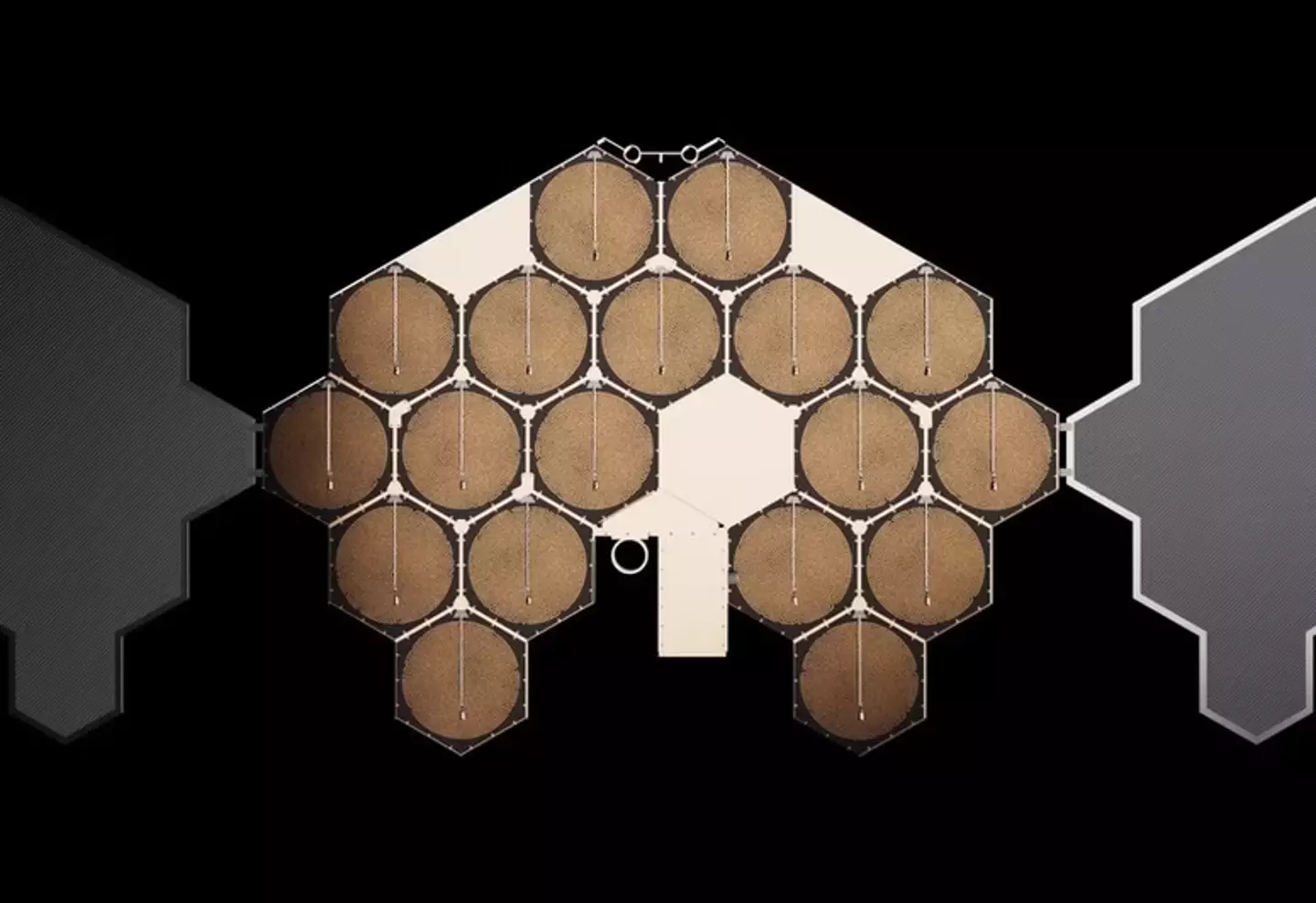
SpinLaunch’s Meridian Space constellation would contain 250 micro-satellites, beating SpaceX’s single-launch record (SpinLaunch)
This would likely humble SpaceX CEO Elon Musk, as his company managed 143 satellites back in 2021 with the Transporter-1, whereas SpinLaunch are aiming for an ambitiously large 250 of the micro-satellites.
Musk was only recently awarded a mega contract by the US government to launch military satellites into space, and he’s previously claimed that Starlink will be able to provide high-speed internet for the upcoming private space station.
Not only will the number of satellites be higher, but it’s also speculated by experts that the broadband capacity of SpinLaunch’s efforts will far surpass what is currently available.
It is a transformative and revolutionary step for the company that would see them immediately become an even bigger player in the space industry if successful – but it does come with a caveat.
While everything that SpinLaunch has aimed to achieve prior to their satellite-focused pivot was centered around the aforementioned kinetic launch capabilities, their planned Meridian Space project surprisingly will be operated by traditional rocket engines.
SpinLaunch CEO David Wrenn has illustrated that this move – and perhaps rejection of their previous methods – is a ‘pragmatic’ one in order to speed up the satellite project and allow it to become a reality, and while plans for kinetic launches remain ongoing, they will still be consigned to the future.
Many people across social media have used this pivot – both into satellite communications business and away from the kinetic launch systems – as a means to cast doubt on SpinLaunch as a company.
“It’s almost like the idea of centrifugal ground launch was not well thought out to begin with,” writes one comment on Reddit. “Curious.”
Another added that “to me this sounds like they have given up on the idea [of kinetic launches], but don’t want to fully admit it yet. Launch conventional satellites on conventional rockets, then just keep doing that. By the time they would reconsider the SpinLaunch concept, we’ll have way too many smallsat launchers on the market anyway.”
One thing to also consider is that while the plans are certainly in place, they’re still yet to execute them so Musk and SpaceX’s record remains in-tact. How successful it is a result could force a major shift in the industry though, potentially knocking Musk down a few pegs when it comes to his dominance in the private sector.
Featured Image Credit: Brandon Bell / Staff via Getty

Amazon is set to launch a $20 billion competitor called ‘Project Kuiper’ into space to rival Elon Musk’s Starlink with the first potential launch just days away.
The first batch of satellites are expected to launch into space as early as next week as Amazon attempts to give Musk a run for his money.
The firm has obtained 80 launch missions that will send the Project Kuiper internet satellites into orbit.
The hope is that the missions will result in the creation of a constellation that can compete with Starlink.
Amazon has even said that it has plans to start offering high speed internet to customers ‘later this year’.
While internet from Amazon will eventually be accessible from pretty much ‘any location on the planet’, customers will require a terminal antenna in order to connect.
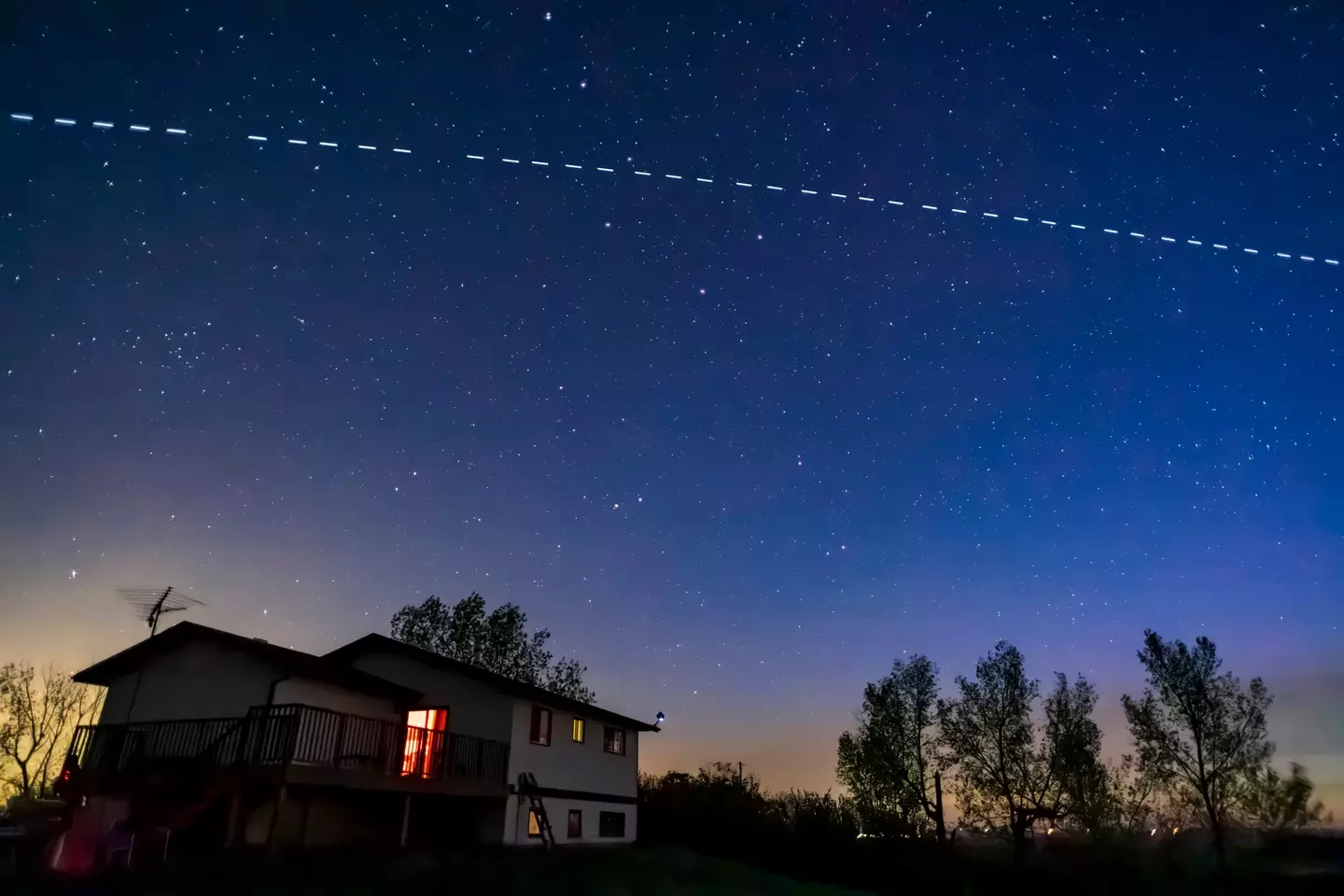
Amazon hope to create a satellite constellation to rival Starlink (Alan Dyer/Stocktrek Images)
Back in 2023, Amazon said that its smallest design for a dish was a seven inch square which is the ‘most affordable customer terminal’.
Weighing just 1lb and offering speeds up to 100Mbps, the dish is portable for customers to move around with them.
In a statement at the time, Amazon said: “Project Kuiper is Amazon’s low Earth orbit (LEO) satellite network. Its mission is to bridge the digital divide by providing fast, affordable broadband to communities unserved or underserved by traditional communications technologies.”
Amazon also plans to offer larger dishes to provide internet coverage in residential as well as enterprise locations.
These will have speeds up to 1Gbps, and Amazon estimates it will be able to produce these dishes for ‘less than $400 each’.

Amazon hope to eventually offer global internet coverage (Amazon)
Rajeev Badyal, who is the vice president of Project Kuiper, said: “We’ve done extensive testing on the ground to prepare for this first mission, but there are some things you can only learn in flight, and this will be the first time we’ve flown our final satellite design and the first time we’ve deployed so many satellites at once.
“No matter how the mission unfolds, this is just the start of our journey, and we have all the pieces in place to learn and adapt as we prepare to launch again and again over the coming years.”
The company hopes to compete with the likes of Starlink.
Owned by SpaceX, the telecommunications provider began launching Starlink satellites in 2019.
As of last year, the constellation now consists of over 7,000 small satellites that are in low Earth orbit.
The firm currently offers internet coverage to over 100 countries and territories around the world.
Featured Image Credit: MARK GARLICK/SCIENCE PHOTO LIBRARY/Getty Images

SpaceX has already lowered prices on its Starlink internet service and monthly plans to bring in more users outside the US, in some countries, the company is going a step further by offering Starlink dishes for free.
Elon Musk’s space company has been hitting major wins recently as it’s en route to becoming the most valuable private entity in the world. Days ago, SpaceX landed a government contract worth $5,900,000,000 to launch military satellites into space over the next four years. The company also collaborated with NASA in the rescue mission of ‘stranded’ astronauts Suni Williams and Butch Wilmore, following technical issues with their Boeing spacecraft.
In another $843,000,000 contract with NASA, SpaceX is tasked with decommissioning the International Space Station in the next decade.
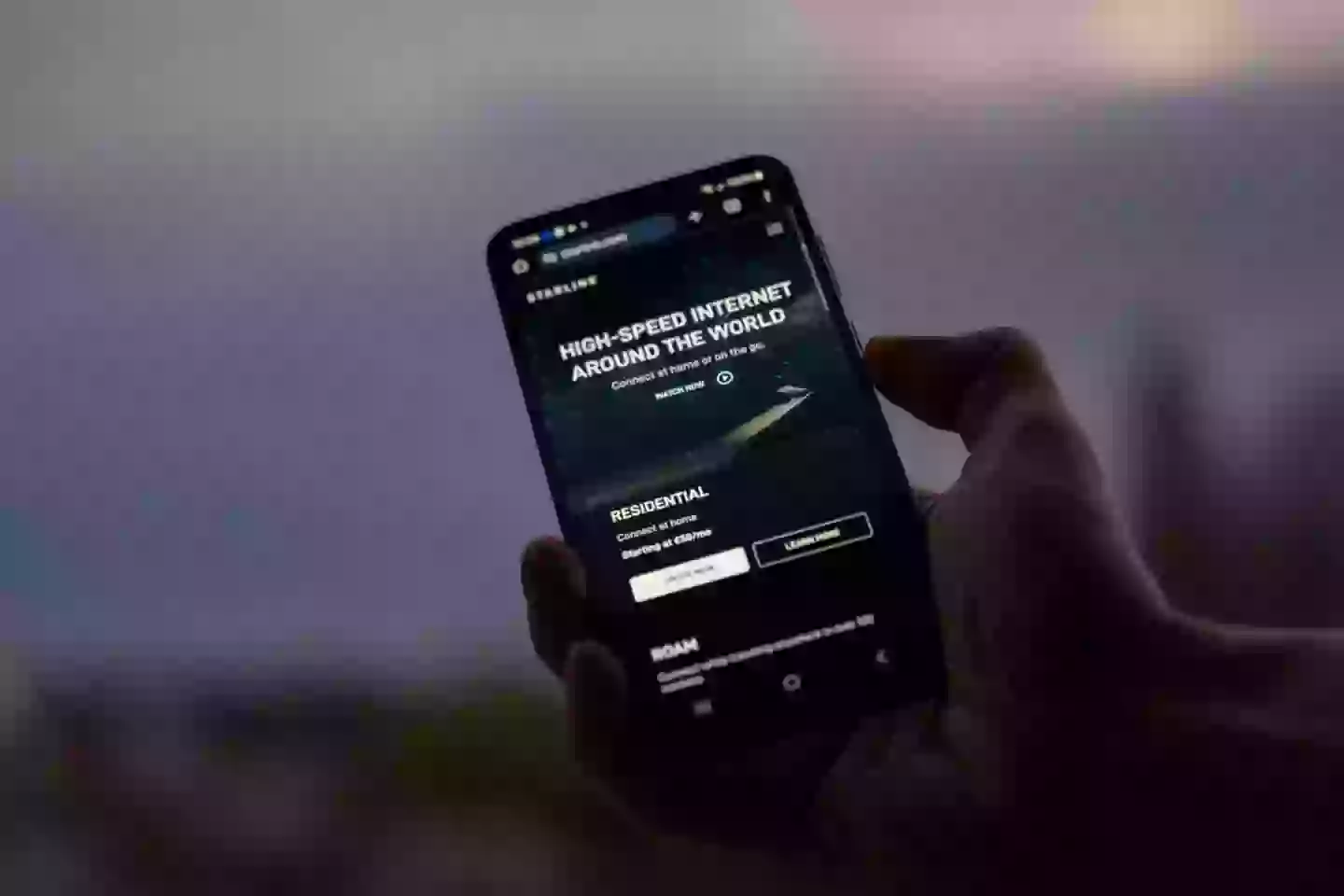
SpaceX is trying to expand its Starlink reach in select countries / NurPhoto / Contributor / Getty
Meanwhile, the space company is trying to expand its Starlink reach in select countries.
In Italy, the standard dish priced at €349 is now being offered at no cost – as long as customers commit to a 12-month residential plan. “Get a Starlink Standard kit for 0 € 349 € in exchange for a commitment to a Residential service plan for at least 12 months,” reads a translated message from SpaceX.
Similar offers are also showing up for users in Australia. Customers will reportedly only pay a fee if they cancel, change their address, modify their service plan, transfer their Starlink kit to another user, or fail to pay their monthly bill, as per SpaceX.
The offer is part of SpaceX’s latest push to expand the satellite internet service’s reach, which now has over five million users in more than 120 markets. However, the journey may be anything but smooth sailing.
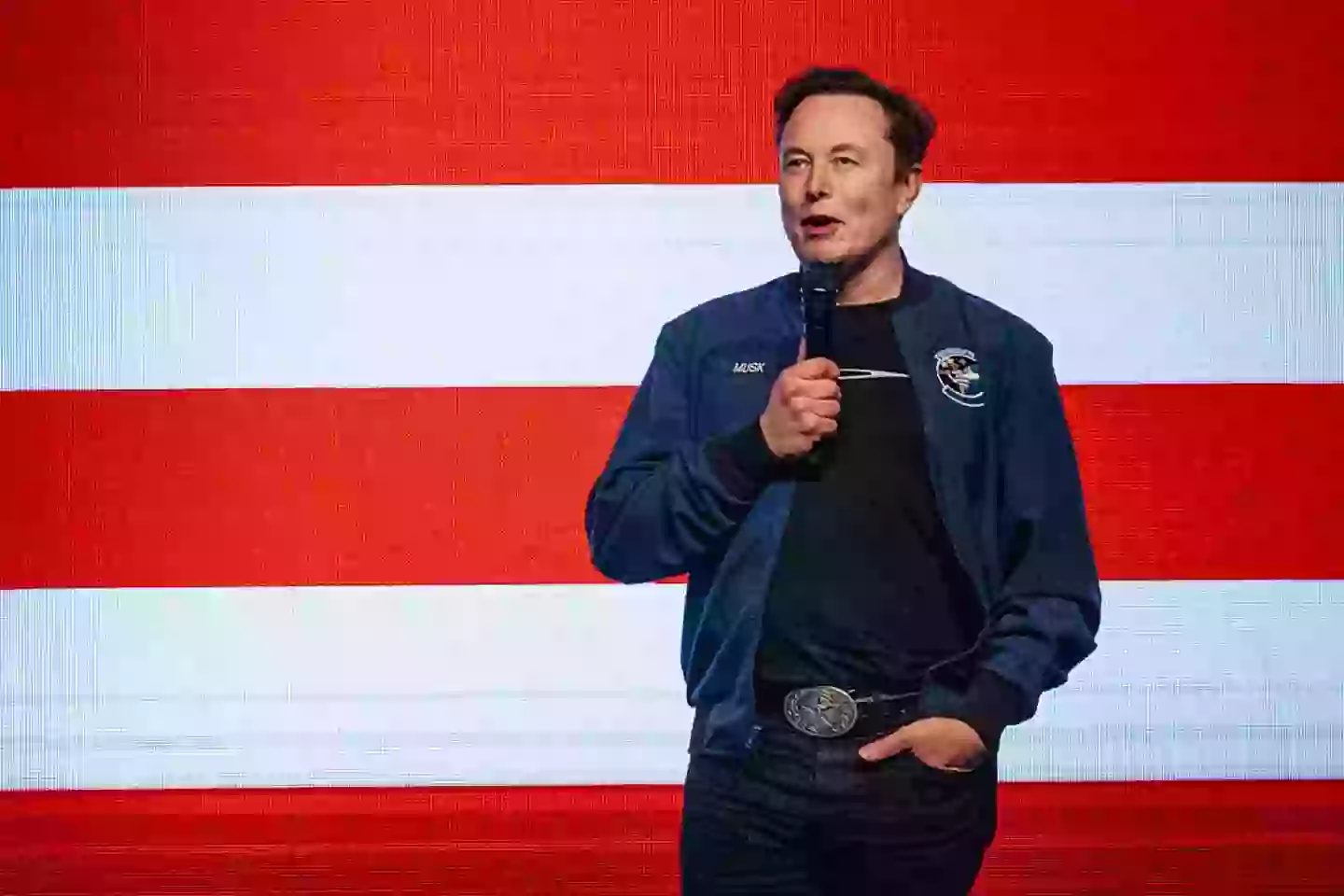
Elon Musk’s space company is en route to becoming the most valuable private entity in the world / Bloomberg / Contributor / Getty
Since the billionaire became a close ally of the White House and a supporter of Trump, his other company, Tesla, has taken a hit with declining sales, along with several boycotts and protests. In addition to his efforts to drastically cut federal spending through the Department of Government Efficiency (DOGE), Musk has leaned into politics so much that early Tesla investors argue he’s ‘too distracted’ as a multi-company CEO.
Over in Canada, a few Starlink dish installers have reported being harassed – both online and in person – by consumers upset over U.S.-Canada trade tensions. This follows Premier of Ontario, Doug Ford’s cancellation of Ontario’s $100,000,000 contract with Musk.
While it’s unclear if SpaceX plans to expand the free dish deal to other markets, residential sign-ups in the US are currently paused in major cities due to limited network capacity.
